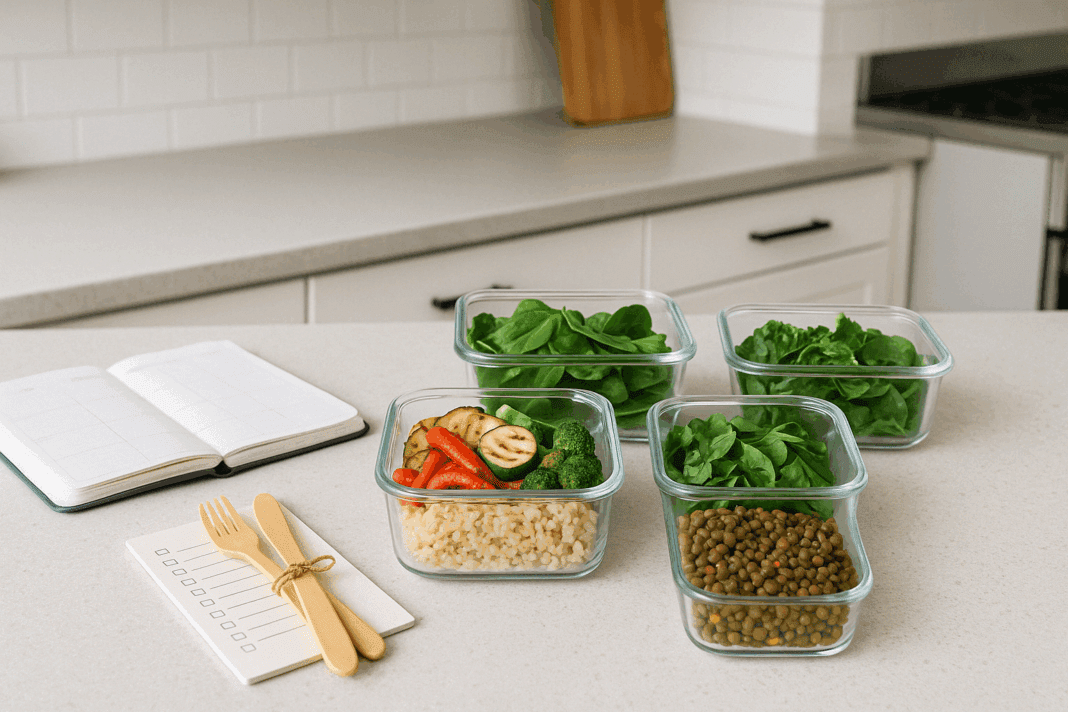In a world increasingly driven by fast-paced routines, chaotic schedules, and rising health consciousness, meal preparation has emerged not just as a culinary trend but as a vital lifestyle shift. For those navigating long work hours, parenting, fitness goals, or dietary changes, the concept of simple meal preparation provides an empowering solution. Done right, it transforms the daily stress of figuring out what to eat into a mindful, nourishing habit that saves time, cuts costs, and supports sustainable health. But successful planning takes more than just good intentions. It demands clarity, structure, and smart strategies rooted in real-life feasibility. That’s where effective meal prep plans come into play.
You may also like: Smart Meal Prep for Weight Loss: Expert-Approved Lunch Ideas and Recipes to Stay on Track
The Rise of Simple Meal Preparation in Modern Lifestyles
With health taking center stage in post-pandemic life, there’s been a cultural pivot toward prioritizing nutrition without sacrificing convenience. People are beginning to ask not only how to eat healthier but how to do so efficiently and affordably. The demand for simple meal preparation solutions has surged as more people abandon overly processed foods in favor of whole ingredients and proactive eating habits. In this context, meal prep plans offer the structure necessary for consistency. From fitness enthusiasts following a low-carb routine to busy professionals embracing the easiest meal prep techniques, the appeal lies in its ability to turn a chaotic mealtime into a stress-free routine.
Understanding the Fundamentals of Meal Prep Plans
At its core, meal prepping involves preparing some or all components of meals ahead of time. This can range from chopping vegetables to cooking entire dishes for the week. The objective is to reduce the time and mental energy spent on daily meal decisions. Effective food prep plans start with intention and planning. That includes creating a comprehensive meal prep list, aligning it with health goals, and determining which ingredients or meals can be safely stored for later use. Whether you’re adopting a 3 day meal prep cycle or prepping for the entire week, the key lies in consistency and simplicity.
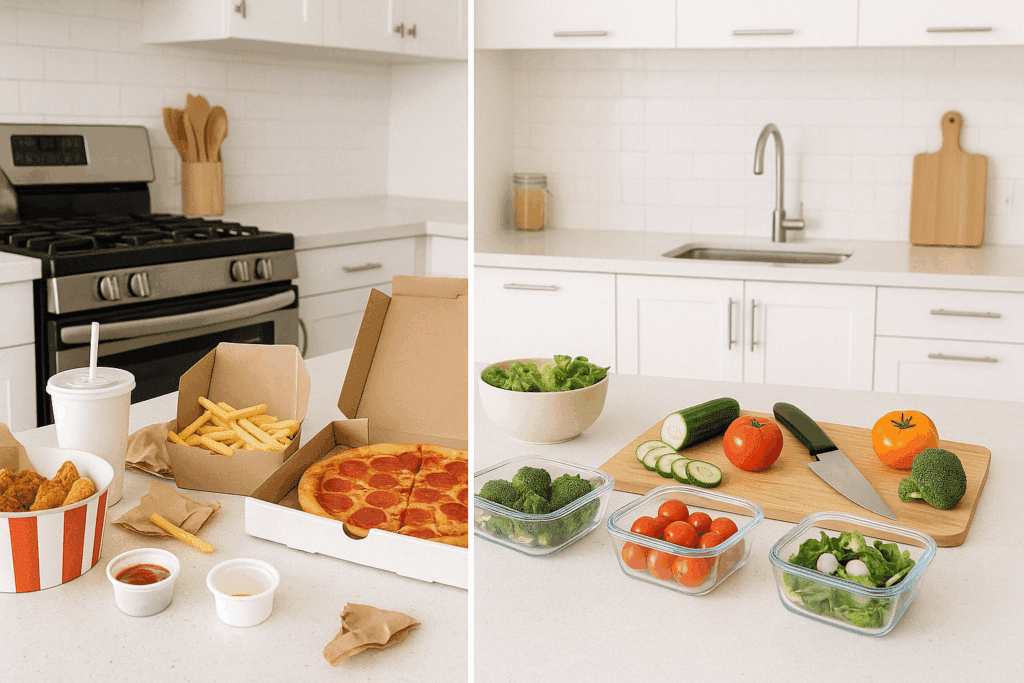
How to Choose the Best Meal Prep Plans for Your Lifestyle
Choosing the best meal prep plans begins with an honest assessment of your lifestyle and dietary needs. For someone new to meal prepping, it’s easy to get overwhelmed by elaborate systems or social media trends. The truth is, meal prep meals for beginners should prioritize ease, flexibility, and minimal ingredients. The focus should be on identifying what are foods to be pre prep in advance, such as grains, legumes, leafy greens, root vegetables, lean proteins, and sauces. These items hold well over several days and offer versatility in various recipes. Once you establish a rhythm, you can branch out into more advanced strategies, but the foundation must be practical and realistic.
Why Simple Meal Preparation Is the Key to Sustainable Health
Simplicity is often underrated, yet it is the cornerstone of lasting change. The easiest meal prep plans often produce the most consistent results because they are repeatable and adaptable. Simple meal preparation removes the friction from healthy eating. It allows individuals to take control over their diets, reduce impulsive food choices, and limit their dependence on takeout. Over time, this builds a framework for mindful eating and long-term wellness. From a psychological standpoint, prep meals for beginners reinforce habits through routine, lowering the cognitive load of meal-related decisions and helping people stay aligned with their nutrition goals.

What Are Foods to Be Pre Prep for Maximum Efficiency?
When creating food prep plans, it’s helpful to distinguish between ingredients that can be prepped in bulk and those that should be made fresh. Foods ideal for pre-prep include roasted or steamed vegetables, cooked grains like quinoa or brown rice, hard-boiled eggs, grilled chicken or tofu, hummus, overnight oats, and chopped salad greens stored with paper towels to prevent wilting. These form the building blocks of quick, customizable meals throughout the week. Additionally, prepping versatile condiments or sauces—like tahini dressing, salsa verde, or herb pesto—can elevate even the simplest ingredients. The goal is not to prepare fancy dishes in advance but to lay the foundation for nutritious meals that require minimal effort during busy days.
Designing Your Meal Prep List: A Step-by-Step Blueprint
A well-crafted meal prep list functions as your roadmap for the week. Start by identifying your weekly schedule and determining how many meals you realistically need to prep. This includes breakfasts, lunches, dinners, and snacks. Next, choose your proteins, vegetables, and starches based on what’s seasonal, affordable, and aligned with your nutritional preferences. Then, group similar cooking tasks to save time. For example, roasting all vegetables at once or cooking all proteins on the same pan. Lastly, invest in quality containers—glass or BPA-free plastic with compartments—that make storage intuitive. Simplicity in the meal prep list leads to sustainability, which is critical for long-term success.
Smart Tips for Prep Meals for Beginners Without the Overwhelm
Meal prep meals for beginners should be fun, flexible, and forgiving. Start with just one or two meals per day rather than prepping your entire week’s worth of food. Focus on recipes you already enjoy and are confident preparing. Avoid the temptation to try too many new ingredients or cooking techniques at once. The easiest meals to meal prep often require little more than baking, boiling, or sautéing. Think sheet pan dinners, grain bowls, or hearty soups. Also, make use of frozen fruits and vegetables, canned beans, or precooked grains when time is tight. The purpose is not to achieve perfection, but to create a supportive structure that reduces daily food stress.
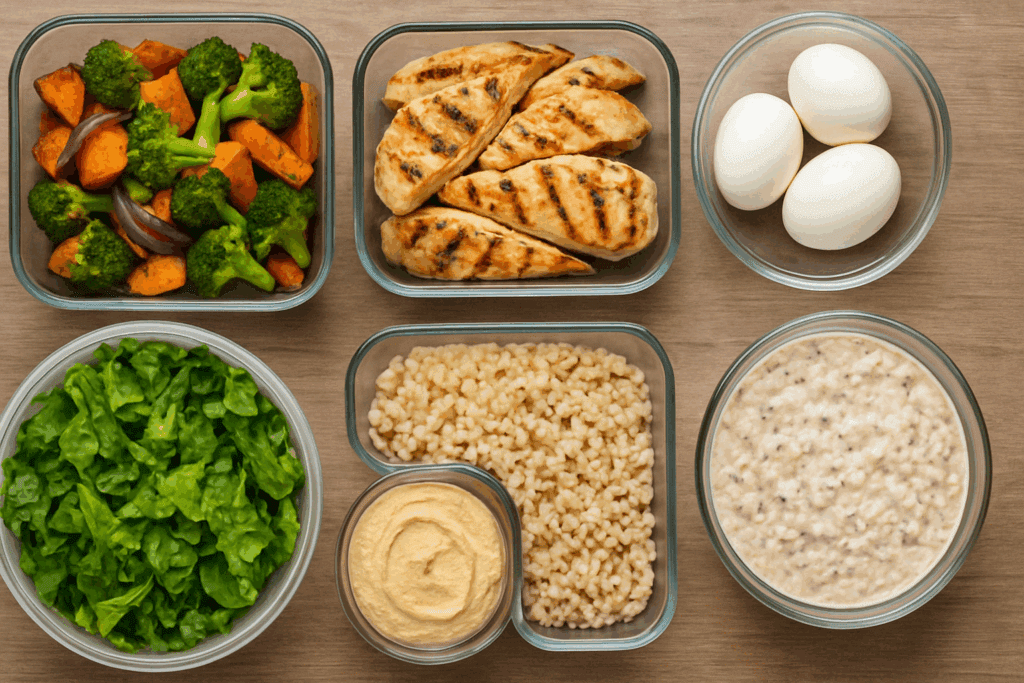
Using the 3 Day Meal Prep Strategy for Flexibility and Freshness
A 3 day meal prep cycle is an excellent compromise between convenience and freshness. Rather than prepping for an entire week—which can lead to food fatigue or spoilage—this approach breaks meal prep into two manageable sessions: one at the start of the week and one mid-week. This allows you to vary your meals more frequently while still enjoying the time-saving benefits of advance preparation. For example, prep enough roasted vegetables, chicken, and brown rice on Sunday to cover lunches through Wednesday, then refresh your plan midweek with a stir-fry, salad kit, or sandwich spread. The 3 day meal prep rhythm also allows you to incorporate seasonal or spontaneous grocery finds without overcommitting your entire menu.
How to Meal Prep Fast Without Cutting Corners
Speed doesn’t have to compromise quality. There are several science-backed ways to meal prep fast while still ensuring nutrient density and flavor. Batch cooking is one of the most effective methods. It involves making large portions of a meal and dividing it into servings throughout the week. Another strategy is mise en place, a culinary principle where all ingredients are chopped, measured, and organized before cooking begins. This reduces time wasted during cooking and minimizes kitchen chaos. Additionally, using time-saving appliances like slow cookers, pressure cookers, and food processors can dramatically cut down prep time. The most efficient food pre routines balance speed with intention, ensuring that your meals still reflect your dietary priorities.
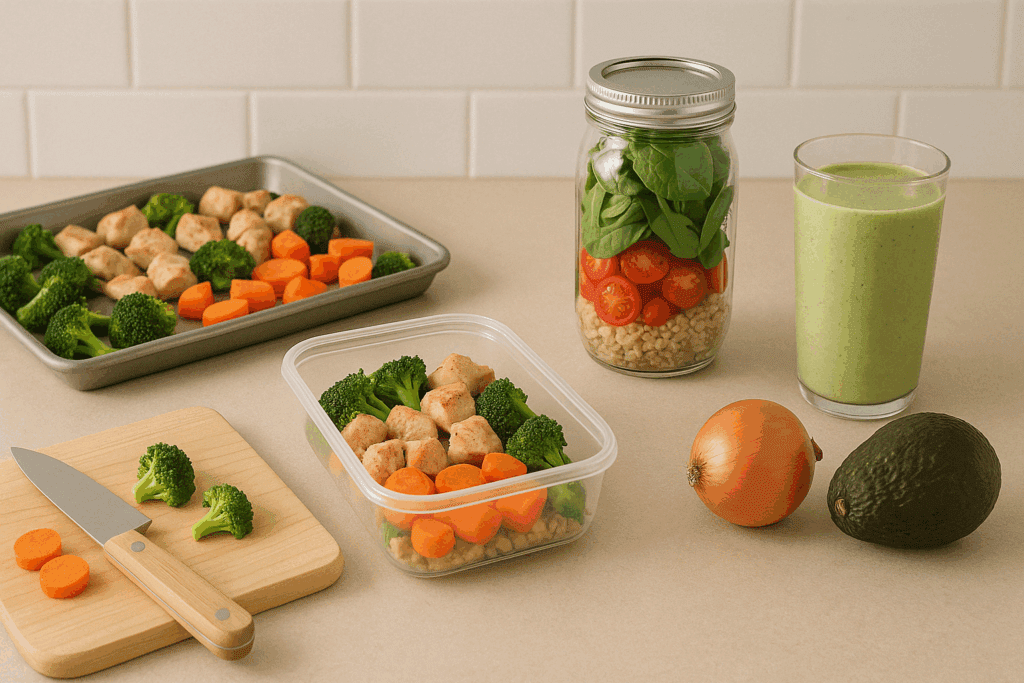
Meal Prep Recipes for Beginners That Don’t Sacrifice Flavor
Flavor is often the missing piece in beginner meal prep plans. People associate convenience with bland or repetitive meals, but that doesn’t have to be the case. Some of the best meal prep recipes for beginners include quinoa-stuffed bell peppers, lentil vegetable soup, tofu stir-fry with ginger sauce, or mason jar salads with chickpeas and tahini dressing. These meals are nutritionally balanced, easy to assemble, and reheat well. The key is to think in terms of components: protein, fiber, healthy fat, and flavor. By layering simple ingredients with bold herbs, spices, and sauces, even a basic food prep list can yield satisfying meals that you look forward to.
Making the Easiest Meals to Meal Prep Work for Your Goals
The easiest meals to meal prep are often the ones that require minimal cooking, offer flexibility, and can be eaten in multiple ways. Think overnight oats that double as snacks, roasted vegetables that serve as sides or salad toppings, or shredded chicken used in wraps, bowls, or soups. These meals should align with your goals, whether that’s muscle gain, weight loss, managing blood sugar, or increasing plant-based intake. For those exploring low-carb options, it’s helpful to distinguish between a low carb diet keto diet approach versus a more moderate reduction in carbs. While the ketogenic diet vs low carb plan both minimize carbohydrate intake, they differ significantly in fat content and metabolic effects.
Simple Meal Preparation in the Context of Low-Carb and Keto Lifestyles
The rise of low-carb eating has led many to wonder: is keto a low carb diet or something else entirely? While the two are related, they aren’t identical. A keto diet is a high-fat, very low-carb regimen that shifts the body into ketosis, a state where fat becomes the primary energy source. In contrast, a general low-carb diet may limit carbs but not enough to reach or maintain ketosis. For individuals exploring whether the keto diet vs low carb approach is right for them, simple meal preparation can be a game-changer. It ensures that meals are aligned with macronutrient targets and removes the guesswork from daily food choices. Common meal prep staples for these diets include leafy greens, eggs, avocados, lean meats, and low-carb vegetables like zucchini and cauliflower.
Is Keto No Carbs? Debunking Common Misunderstandings
A frequent misconception is the idea that keto equals zero carbohydrates. In reality, is keto no carbs accurate? Not quite. Even on a strict ketogenic diet, individuals typically consume 20 to 50 grams of net carbs per day, primarily from fiber-rich vegetables and occasional fruits like berries. The distinction lies in carb quality and quantity. Smart meal prep allows individuals to select nutrient-dense, low-glycemic foods that support ketosis without eliminating plant diversity. It’s also important to consider sustainability. When evaluating whether is a keto diet sustainable, factors such as nutrient variety, meal satisfaction, and long-term adherence matter greatly. Simple meal preparation helps maintain consistency by offering enjoyable, nourishing meals that fit within carb limits without compromising on flavor or nutrition.
Why Meal Prep Matters for Both Ketogenic and Low-Carb Diets
Whether following a ketogenic or low-carb lifestyle, meal preparation is the linchpin of success. It provides the control needed to manage macronutrient ratios, avoid hidden sugars, and maintain metabolic flexibility. Comparing ketogenic diet vs low carb options reveals subtle differences in structure, but both benefit immensely from planned, home-prepared meals. Instead of relying on packaged keto snacks or low-carb bars, which often contain artificial additives, creating a food prep list rich in whole foods ensures better outcomes. The ability to meal prep fast becomes particularly helpful when hunger strikes and there are limited compliant options available. Thoughtful planning empowers individuals to eat with purpose, stay consistent, and make mindful choices regardless of dietary preference.
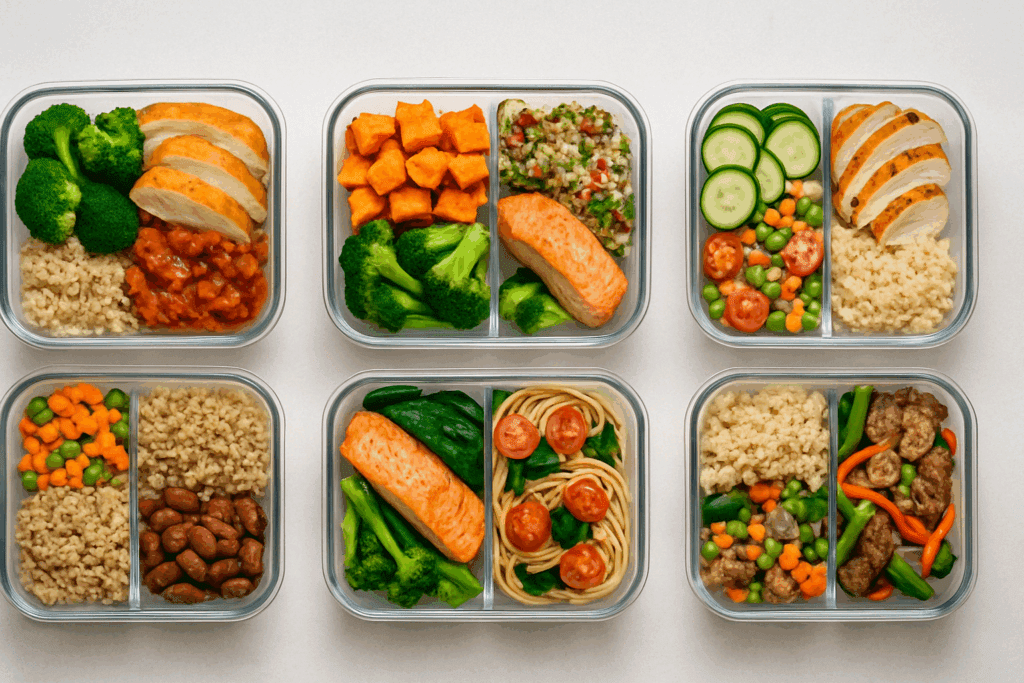
Frequently Asked Questions: Simple Meal Preparation and Smart Meal Prep Plans
1. How can simple meal preparation improve my mental well-being and reduce decision fatigue?
Simple meal preparation can significantly enhance mental clarity by minimizing the number of daily choices related to food. When meals are already planned and prepped, you’re not expending mental energy on last-minute decisions, which lowers stress and reduces what psychologists call “decision fatigue.” Having a reliable food prep list gives you a sense of structure that supports both productivity and peace of mind. As one of the best meal prep plans for mental wellness, it can create a rhythm that reinforces confidence, purpose, and consistency. Over time, simple meal preparation becomes less about cooking and more about maintaining emotional stability and mindful eating habits.
2. What are foods to be pre prep that support gut health and digestion?
Foods that support gut health and are easy to pre prep include fermented items like kimchi, sauerkraut, or plain yogurt, which introduce beneficial bacteria to the digestive tract. Legumes such as lentils and chickpeas, when soaked and cooked in advance, provide both fiber and prebiotics that nourish gut flora. Roasted root vegetables, lightly steamed cruciferous veggies, and oats also rank high on the list of what are foods to be pre prep for optimal digestion. For individuals just starting to prep meals for beginners, adding gut-friendly options to your food prep plans introduces variety and functional health benefits. These ingredients can be prepped in batches and combined into versatile, gut-friendly meals throughout the week.
3. How can I adapt my meal prep plans when cooking for different dietary needs within the same household?
Managing multiple dietary needs can seem overwhelming, but the easiest meal prep strategies revolve around modular cooking. For example, batch cook neutral base items such as rice, roasted vegetables, or grilled tofu, then customize proteins and sauces based on individual dietary preferences. Having a shared food prep list with core staples makes it easier to create separate meals without additional workload. This approach is especially helpful in meal prep meals for beginners because it teaches flexibility and accommodates food allergies, lifestyle choices, or chronic health conditions. Adaptable meal prep plans ultimately foster inclusivity and reduce the temptation to rely on separate, less nutritious convenience foods.
4. What are some overlooked tools that can help meal prep fast without compromising nutrition?
While many rely on the usual suspects like blenders or slow cookers, there are some lesser-known tools that streamline your ability to meal prep fast. A high-quality mandoline slicer can cut prep time for vegetables in half, while a digital food scale supports portion accuracy for macro-specific meal prep plans. Vacuum sealers extend the life of prepped ingredients, keeping items like leafy greens and cooked proteins fresher for longer. For those tackling prep meals for beginners, even basic tools like silicone baking mats and collapsible storage containers can make a big difference in speed and cleanliness. These upgrades contribute to the easiest meal prep experience by reducing both cooking and cleanup time.
5. How does the concept of a meal prep list evolve for those advancing from beginner to intermediate levels?
For beginners, a meal prep list often focuses on familiar foods and simple meals. As experience grows, so does the complexity and creativity of the list. Intermediate-level planners might begin to categorize their lists by protein, carb, and fat sources or incorporate global cuisines into their food prep plans. They may also begin using rotating seasonal ingredients and scaling recipes for batch cooking. This evolution from meal prep meals for beginners to more advanced planning supports variety, skill-building, and deeper nutritional awareness. The transformation makes the act of food pre not just practical but also a source of personal growth and culinary exploration.
6. What psychological factors affect consistency in simple meal preparation routines?
Consistency in simple meal preparation is often rooted more in psychology than in logistics. Habits are shaped by positive reinforcement, so selecting the easiest meals to meal prep that taste good and feel rewarding is essential. Time-blocking prep sessions into your weekly calendar and setting visual reminders can reinforce follow-through. It also helps to maintain a well-organized kitchen, as clutter can lead to avoidance and procrastination. The structure provided by food prep plans reduces impulsive behaviors like ordering takeout, helping you make aligned choices even during emotionally charged moments. Over time, the satisfaction of having ready-to-eat meals becomes its own motivator.
7. Can I apply the 3 day meal prep method to travel or business trips without relying on packaged foods?
Yes, the 3 day meal prep system can be adapted for travel by focusing on portable, nutrient-dense meals that don’t require refrigeration for several hours. Examples include hard-boiled eggs, trail mix, wraps with hummus and roasted vegetables, or mason jar salads. By prepping these meals in advance and storing them in an insulated bag, you can adhere to your food prep plans while on the move. Travelers often overlook how effective simple meal preparation can be in avoiding airport or gas station junk food. For business travelers new to meal prep meals for beginners, even small wins—like bringing breakfast—can preserve energy and mood throughout the day.
8. What are the best ways to introduce children or teens to meal prep plans in a positive way?
Getting children or teenagers involved in food pre activities early can foster lifelong healthy habits. Start by letting them pick items from the meal prep list, such as their favorite fruits, snacks, or breakfast components. Hands-on tasks like stirring, seasoning, or organizing containers give them a sense of agency and achievement. Teaching the easiest meals to meal prep also equips them with confidence in the kitchen and supports their growing independence. Over time, involving youth in simple meal preparation creates shared responsibility, encourages balanced nutrition, and reduces mealtime resistance.
9. How do I balance variety and repetition to avoid getting bored with meal prep recipes for beginners?
Repetition creates efficiency, but too much of it leads to boredom, which can derail even the best meal prep plans. One trick is to use different spices, dressings, or sauces to reinvent the same base meal—for example, changing a grain bowl from Mediterranean to Asian by simply adjusting the toppings. Rotating your food prep list every two weeks helps retain freshness in your routine without overwhelming your schedule. Using a 3 day meal prep approach gives you natural pivot points to switch ingredients midweek. For those following meal prep recipes for beginners, the secret to sustainability is creative diversity, not total reinvention.
10. What future innovations might shape the next generation of food prep plans?
The future of food prep plans is likely to merge convenience with tech-driven customization. We’re already seeing smart kitchen gadgets that sync with mobile apps to automate cooking times, generate a meal prep list based on dietary goals, or track inventory in real time. Subscription-based services may begin offering hybrid solutions that combine ready-to-eat elements with ingredients for the easiest meal prep, tailored to individual preferences. As AI and personalization improve, simple meal preparation may become more intuitive and responsive to changing schedules and health data. This evolution will further simplify prep meals for beginners and experienced planners alike, making nutrition more accessible, efficient, and sustainable.
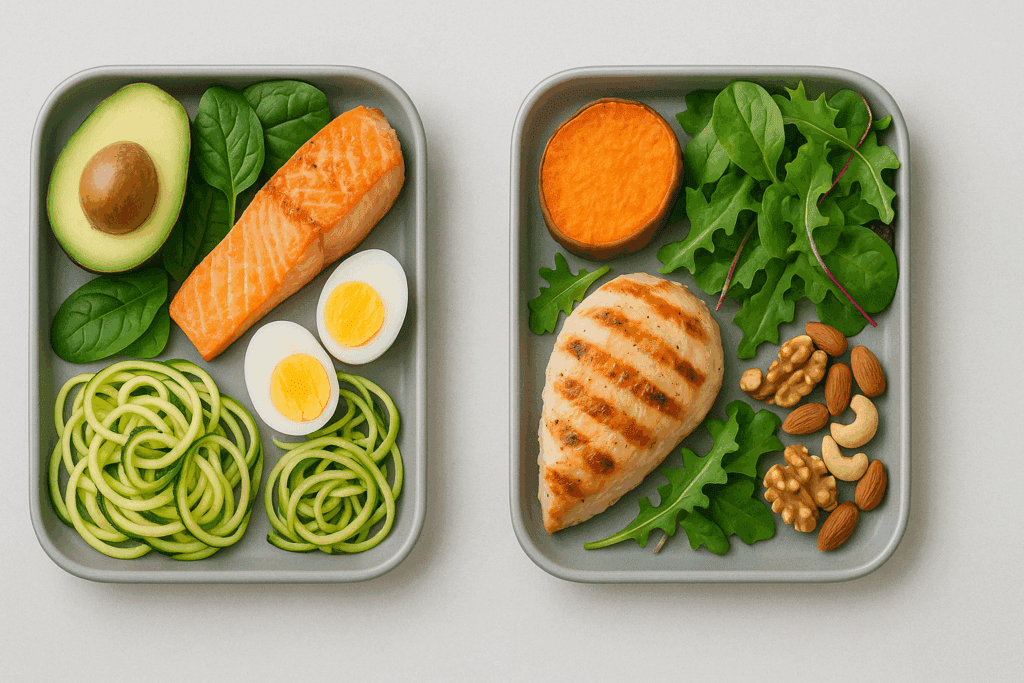
Final Thoughts on Simple Meal Preparation and Long-Term Wellness
Simple meal preparation is not just about saving time in the kitchen—it’s about reclaiming control over your health, building resilience against stress, and creating a daily rhythm that aligns with your values. From the perspective of whole-food, plant-based nutrition, it becomes a tool for reducing ultra-processed food consumption and embracing mindful eating. And for those navigating specific dietary patterns like low-carb or keto, the structure of meal prep creates guardrails that make consistency achievable.
Understanding the nuances between the low carb diet keto diet approach and the more restrictive ketogenic version is vital for making informed choices. Asking questions like is keto a good diet or is a keto diet sustainable opens the door to critical evaluation rather than blind adherence. Similarly, dispelling myths such as is keto no carbs allows for a balanced, evidence-based approach to nutrition. Ultimately, whether you are focused on plant-forward meals or fine-tuning your macros, simple meal preparation remains a universally valuable practice. It’s not about rigidity—it’s about preparation with purpose. And in the long run, that’s what sustains both health and happiness.
Was this article helpful? Don’t let it stop with you. Share it right now with someone who needs to see it—whether it’s a friend, a colleague, or your whole network. And if staying ahead on this topic matters to you, subscribe to this publication for the most up-to-date information. You’ll get the latest insights delivered straight to you—no searching, no missing out.

